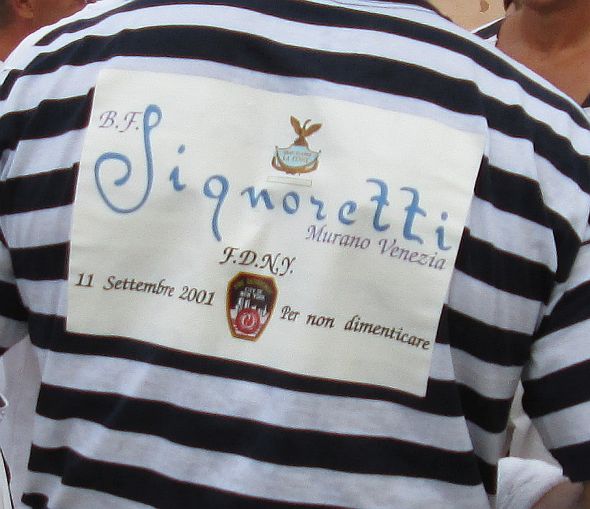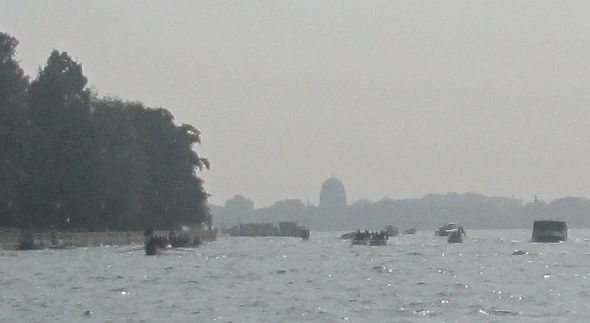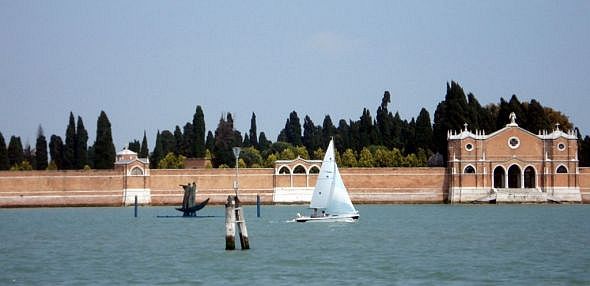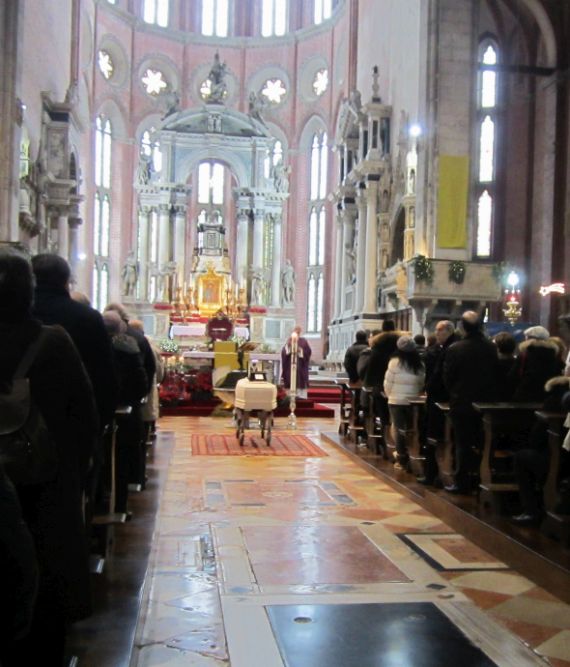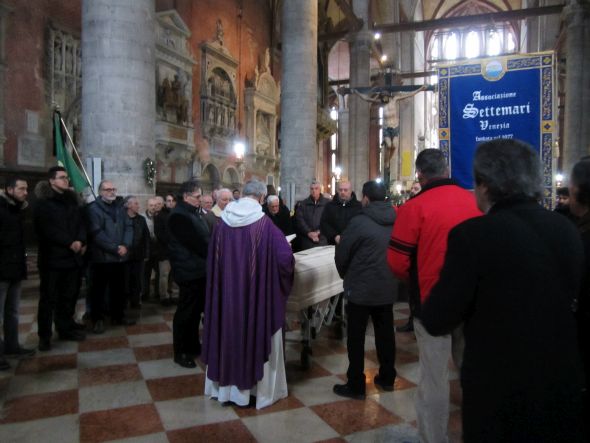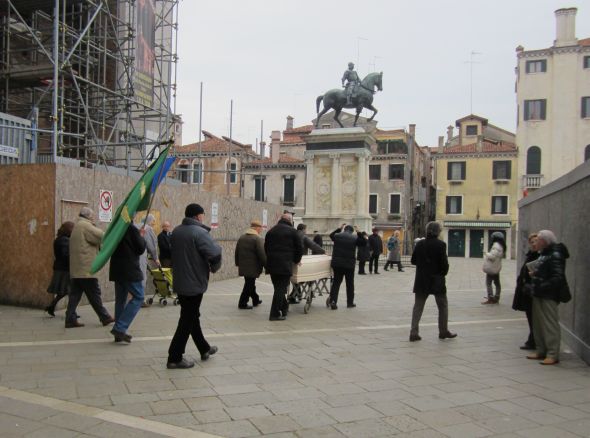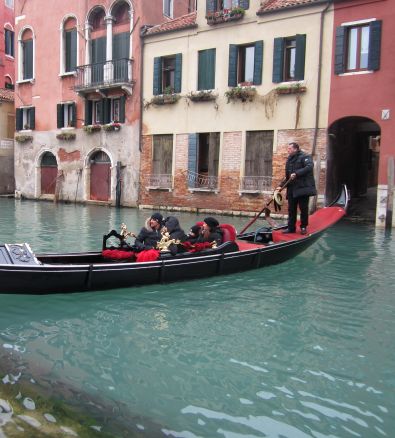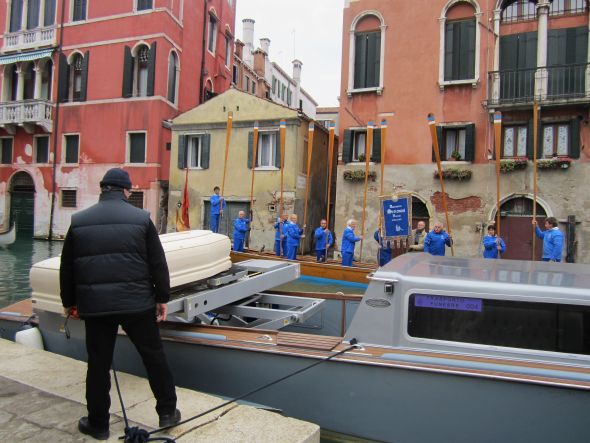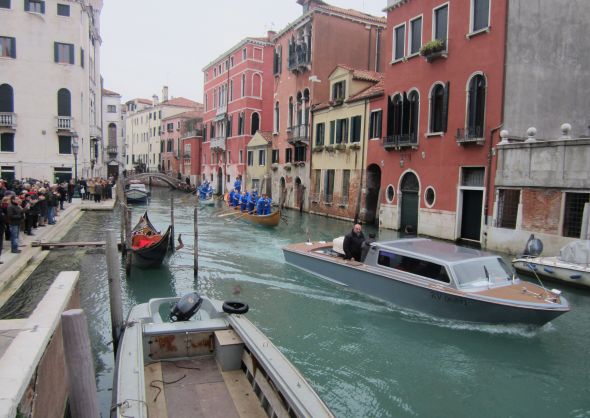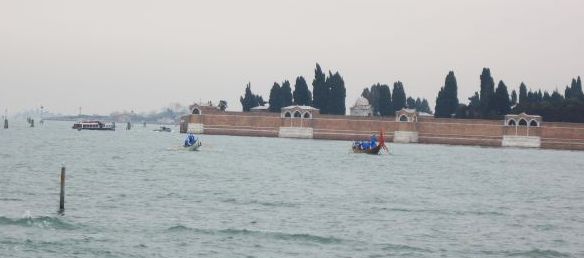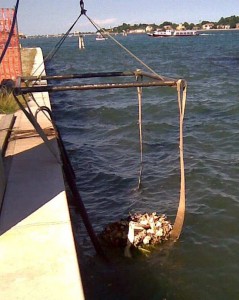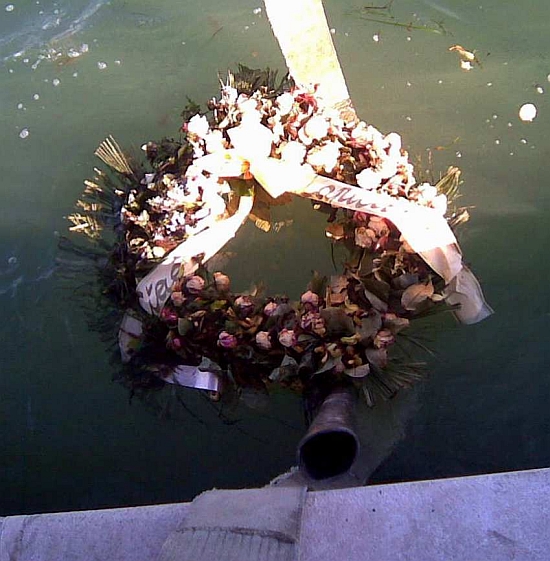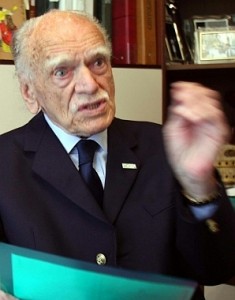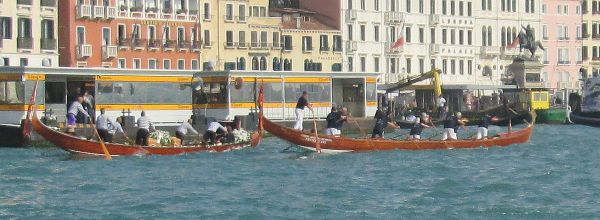
I’ve been noticing all sorts of interesting things around the city over the past few days, and while I regret to imply that a funeral qualifies as “interesting,” I will state that often the deceased is extremely interesting and makes me sorry I never knew him or her, and often never even heard of them until the dread news was published.
A case in point is Bruno Fusato Signoretti.
The “interesting thing” was his funeral cortege this morning, which didn’t completely surprise me when I saw it from the #1 vaporetto. I had only heard of him two days ago, when his obituary in the Gazzettino alerted me to the human behind a name with which I was familiar in exactly one way: Glass. That is, I knew that the name Signoretti was an important one on Murano, and that this company, or person, had begun (like many commercial ventures here) to sponsor some of the racers of the major Venetian regatas.
But there was much more to say about him, which I have learned now that he’s gone.
I have mashed up a few biographies, one written by Tullio Cardona in the Gazzettino, and the other by Maurizio Crovato on the website veneziaeventi.com. Here goes:

Gondoliers and Murano are in mourning. On October 5, Bruno Fusato “Signoretti” passed away in his house on the Lido. He was 74 years old, and had been fighting a difficult disease since last March.
Fusato began working as a gondolier, son of a centuries-long tradition; his family was noted among gondoliers since 1600. In more recent times, his grandfather Vincenzo, nicknamed “Cencio,” was chosen by Prince August Wilhelm of Prussia for his excursions in the lagoon in 1907, and when Cencio got married, the Prince sent him a silver coffee service and 1000 lire. (The new gondola he was able to order cost 300 lire, to give some idea of the magnitude of this gift.)
Bruno’s father Luigi was the gondolier of Princess Margaret and Queen Elizabeth II.
When young Bruno began his career as a gondolier, he was known for being able to make six “murane” a day (roundtrips in his gondola from San Zaccaria to Murano). He became the substitute gondolier for Albino Dei Rossi, the legendary Venetian-rowing champion known as “Gigio Strigheta,” filling in while Gigio was training for the races. “Thanks to this young man,” Strigheta quipped, “when I’m not working, I make twice as much.”
What with his love for the gondola, and for the regatas, and for his city, Bruno began to diversify. He retired from gondoliering and began to organize tourist traffic to Murano. Then he opened stores in London, and finally, in 1986, he acquired an abandoned glass furnace on Murano and established an important center for glassmakers and designers.
He also lived a kind of parallel career of philanthropy and benefaction. As Crovato states, he always kept the “old gondolier” in him. There was not one racer, not one aged gondolier, alone and forgotten, who didn’t receive help from him in moments of need.
In 1991 he dusted off the abandoned tradition of the “disnar” (dinner) of the competitors before the Regata Storica. He sponsored difficult art restorations, and when La Fenice opera house went up in flames in 1996, he was a founding member of the reconstruction fund-raising initiative, and its first private contributor.
After September 11, 2001, he created the idea of the “Baptism of Venetian-ness” (battesimo di venezianita’). I can’t tell you how it worked, but it raised funds for the firemen of New York.
His last joy, as they put it, was the victory of Giampaolo d’Este and Ivo Redolfi Tezzat of the Regata Storica 2014, a team which he had sponsored.
In remembering him, Tezzat gave Signoretti the baptism of gold, at least in Venetian terms:
“What he said, he did.”
In a city where words outnumber deeds by an impressive margin, this is a statement whose brevity conceals a universe of meaning.
